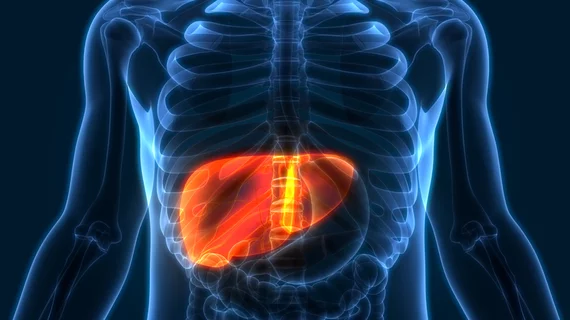Hospital dramatically reduces overuse of CT liver imaging with a few targeted interventions
A California academic medical center is dramatically reducing unnecessary liver imaging with a few targeted strategies, according to new research published Jan. 16.
The Centers for Medicare & Medicaid Services has identified CT of the abdomen and pelvis as a potential target for quality intervention, with national monitoring across healthcare institutions. As part of those efforts, CMS informed Loma Linda University Medical Center that it was overusing such exams, sparking leaders to launch a quality initiative to stem this trend.
Beginning in 2018, the San Bernardino Country institution set in motion changes that included updated liver imaging protocols to align with American College of Radiology guidelines. Radiology and other clinical team members also attended regular educational sessions to review updates, tracking CT exam counts after their changes.
“We have found that following national guidelines and education was significantly associated with reduced overuse of abdomen CT with and without IV contrast,” Natalie Albasha, a medical student with the University of California, Riverside, School of Medicine, and co-authors wrote in Current Problems in Diagnostic Radiology. “The majority of these examinations were being ordered by a few teams, so we identified the largest contributor of the orders and intervened.”
For Loma Linda University Medical Center, transplant patients were discovered as one of the key recipients of unnecessary CT. Leaders established a relationship between the radiology department, liver transplant team and hospital administration, aiming to achieve a shared goal of meeting national quality benchmarks. Prior to the project, providers performed CT scans on all such patients. However, in reviewing guidelines, Loma Linda shifted to only having those previously treated with loco-regional therapy receive scans both with and without contrast. Meanwhile, all other CT evaluations were performed with post-IV contrast only.
Experts updated liver imaging protocols and indications and had technologists submit patients’ planned course of imaging to a radiologist for approval the day prior. They also programmed the new process into all scanners across sites while educating stakeholders about appropriate liver imaging pathways. The intervention has appeared to pay off, with the median monthly number of abdomen CT with and without IV contrast decreasing afterward while the median number of those with IV contrast increased.
Albasha and co-authors said they’re now seeking ways to spread these gains further.
“The overuse of CT with and without IV contrast has a twofold negative impact on the patient population: increasing radiation exposure to patients without adding value and increasing cost,” they wrote. “This targeted intervention with liver transplant program was only one part of the larger issue of overutilization of abdomen and abdominopelvic CT with and without IV contrast. We are actively involved in additional efforts to address overuse in other service lines.”

